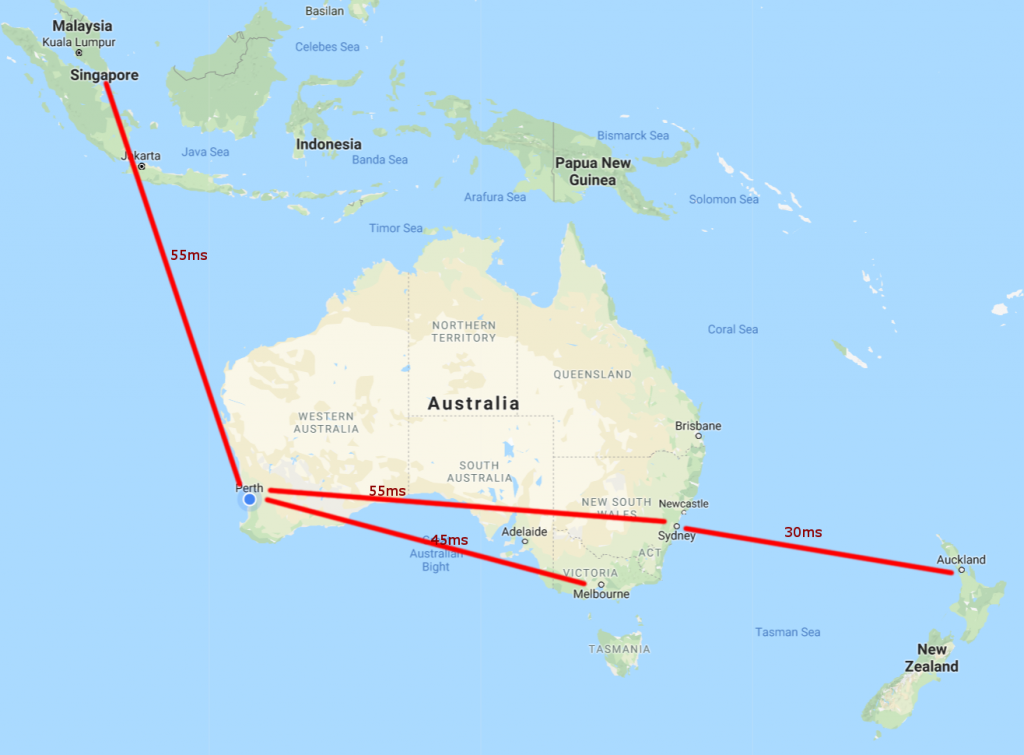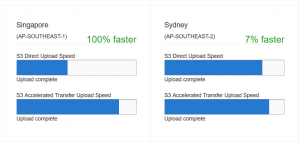This started as musings on where broadband connections enter buildings. It went further.
There’s a few technical specifications that we’ve become very used to in our homes and offices for the last few decades, but they’ve not always been there. Their introduction to our lives has spurred changes in the construction of our dwellings, and our expectations of what we do in our lives. And another one is unfolding now.
Plumbing (Scheme Water, Sewerage), Electricity, and Broadcast TV have all had their impacts. Water in & out has remained largely unchanged in the last 50 years, having moved from outhouses to servicing dedicated ‘wet’ rooms in our buildings (kitchens, bathrooms, WCs). Electricity has crept from being provided for lighting purposes only, to additionally providing a single power socket per home, to multiple sockets per room at convenient places for us to leave devices semi-permanent plugged in. We’ve become accustomed to the 110v/60Hz and 230v/50Hz, and the sockets and plugs are generally down to several well known arrangements of pins and locking mechanisms.
With the dawn of broadcast TV (UK: 1936, US: 1948, Australia: 1965), and excluding set-top “rabbit ears”, we’ve had antennas on roofs with coaxial cables leading to specific rooms: family rooms, bedrooms, etc. Using the superior reception of the roof-top antenna has meant that the placement of TVs was pretty much determined by the location of Co-Axial sockets in walls. Indeed, not just which rooms, but which corners and walls of specific rooms, close to these antenna sockets. While we’ve happily added multiple power sockets to rooms for future proofing our desire to rearrange our lives, co-axial cables suffered more loss with more joins to other sockets, so it was generally avoided.
Thus our layout of our homes has been throttled by the tether to the roof top antenna.
We are well into the next revolution delivery of our video feeds over a new carrier: IP and the Internet. The age of radio frequency broadcast is declining, and with it some of our cultural norms.
One impact is building design: a time will come when we’ll no longer request TV broadcast antennas on buildings, and coaxial sockets on walls. This is replaced with either short range high speed WiFi such as 802.11ac, or wired Ethernet ports at gigabit speed (no less). Wireless has continued to increase in speed, but as with all broadcast spectrum, it is subject to interference from other wireless signals, which can impact throughput. A continual battle between ever faster wireless speeds, improved signal processing and interference handling, and cost considerations will play out to determine if our TVs will have a wired or wireless IP connection within the home.
Wireless has been through several generations, some of which are now well and truly dead. WEP encryption, once the critical protection for wireless networks, is known to be compromisable, and thus is abandoned today. Hardware devices that only implemented WEP are effectively junk. Devices with physical Ethernet socket have not suffered so – the trusty RJ45 100 base TX CSMACD works as well today as it did 20 years ago.
We’ll see people opt to use wireless for video delivery within homes for short term savings, the aggressive rate of change on encryption and signalling standards for wireless networks will find many wireless-only devices become redundant before their time. We expect to get 10 – 20 years from a TV (its often an expensive item), but should WPA2 get compromised, then those hosts are vulnerable. We’ve already seen this with the KRACK vulnerability, and those vendors that did not patch their firmwares are probably vulnerable (both the Access Point and clients need patches to address KRACK for WPA2).
Of course, the interactions that your TV makes over whatever connection should indeed be over an encrypted transport, but even the encryption that uses – the key lengths, signature algorithms, all will be refreshed and strengthened over time. In the last 5 years we’ve seen web site certificates change in key length (1024 -> 2048 bit), signatures for asserting a chain-of-trust from a certificate authority move from what was MD5 to SHA1 to SHA256, the bulk encryption algorithms move from RC4 to AES128 to AES256 to Elliptical Curve algorithms, and message digest checksums from MD5 to SHA1, to SHA256, and not SHA384. Each of these changes needs to be applied to the software in your appliances for them to maintain the security you expect to be there.
Many manufacturers won’t bother updating this on their already-shipped units; the disposable consumer sales cycle continues unabated and effectively is helped by these changes, and customers barely make any mention of the trouble of having to replace these items.
But as we move to IP delivery of video content, we also move to more of a video-on-demand world, and away from a time-of-broadcast (playout) world where all consumers – the audience in a broadcast area – would all get the same content at the same time.
30 years ago, when I was at school, the talk in the playground was of the latest episode of some show: MacGuyver, Airwolf, The A-Team, comedies like ‘Allo ‘Allo, The D-Generation, The Comedy Company, etc. With only a few select channels to choose from (3 where I was), your peers likely saw the same content at the same time, making for a shared experience that you wove into the daily fabric of society.
Shows with catch phrases became common place, and everyone knew them. Mark Mitchell gave Australia the “Couple o’ days, Beautiful”, and everyone knew the setting and connotation.
As we move to a VOD, subscription based scenarios, this disappears. Shows on one subscription service are not on others, or appear at different times. Subscription services cross local boundaries in a way that broadcast spectrum could never do with the limitation of transmitter power. People watch content at different times, in different months, from different countries (despite the continued attempt for geo-blocking). The social background noise of modern society is changed, disjointed.
I suspect that in the next decade, broadcast TV will disintegrate. Advertising spend will continue to shift to product placement in original content, and customised pre- and mid-roll ad insertion, customised to the view, tracked and targeted.
As broadcast TV declines, it heavily modifies the stalwart of most TV stations: TV news. While news has been available form multiple media sources, local broadcast TV news was always curated to somewhat balance local, national and global current affairs. If all journalism production costs the same, then stories filed that can be replayed in multiple territories have more value per second, and the decline of local stories.
I’ve watched local news for decades, paying attention to their mix of slow news days stories (car through a fence, cat up a tree) and more interesting ones (state general or by election results, perhaps investigative journalism – but that’s on the decline). Its even interesting to sometimes see the format of content being padded out with in-content extended adverts for news clips that are scheduled later, the tweaks to the lower thirds straps, even the background animations that engage the reader in subtle ways. These things often annoy me at how much they con the audience’s emotional engagement with a story. One local broadcast TV channel has a habit of applying a cinematic dust/sparkle video filter to most human-interest stories (cat up tree). They’ve played games with putting weather forecasts showing MIN (overnight) and MAX (daytime) temperatures on top of each other, and then sometimes MAX (daytime) on top of MIN.
(While I’m ranting, the “cross to the local hospital to a reporting standing out front” seems a waste of time, as is a “cross to the next room” scenario which an anchor could have just read out and moved on from.)
One media that has withstood much change until now is broadcast radio. I suspect that because radio has had one place where its continued its existence without much challenge: vehicles. Vehicle manufacturers have been pretty slow at putting DAB radios into vehicles by default. AM and FM radios are still universal. I wrote in 1995 in the UWA student magazine Pelican about the dawn of MP3 as an audio format, and the start of Digital Audio Broadcasting (DAB). The MP3 player was born – Apple seized on it with the iPod, and the Sony Walkman receded to the annals of history. And while DAB has been around for some time, the licensing and hardware has been at an expense that did not generally warrant the improvement in delivery, and clearly not supported by vehicle manufacturers.
But while broadcast radio has been compatible with what the listener is doing in vehicles: a threat is coming to the radio’s last bastion. It’s the same threat that is coming to organisations that live off driving license fees: self-driving cars. Drivers can then do other tasks: they can then look at screens. The radio will stop becoming an in-vehicle companion to millions of single-occupant cars, as those occupants will start viewing content instead of just listening to it. Eyes will come off the road.
(And if eyes are off the road, do we have the demise of billboards and placards as an advertising medium – as no one is looking out the window any more?)
By extension to this, the music industry relies on radio for socialising its content, encouraging people to either purchase content, or become customers to performers when they tour. With broadcast music no longer curated to seed the introduction of new content over time, artists will find it difficult to get established.
Coupled with the self-driving car is the move to electric vehicles, and the eventual drop in the petroleum fuel use, and the tax (excise) that is collected from this. Governments often use this as a source of funding road building. This model will have to change, probably to a tax-per-kilometer travelled on the owner of these vehicles.
And with self-driving cars, we can finally have some backward parts of the world switch to the metric system for units of distance and speed, without the risk of the human population getting it wrong and going too fast/slow/far.
Eventually, as my friend Paul Fenwick (PJF) has spoken of, the population will move to not owning vehicles, but calling them completely on demand – a la Uber/taxi, but without the human driver. These vehicles will get corporate ownership, and will all have live mobile broadband data links to each vehicle. They’ll all have built-in dash cams, and logging of all activities in and out of the vehicles at all times. New advertising opportunities will rise up – screens in these vehicles will know the route you’re about to take to advertise products and services on or near your route, so you can chose to stop off. They’ll know your preferences, the environmental factors (warm, cold, sunny, rainy) and advertisers will bid to produce targeted advertising at you while you travel.
Next knock on effect from this is the car insurance industry. If the self-driving vehicle has less accidents, and the risk of death or major damage is less, then disruption will arrive here too. With only a few major self-driving-taxi companies that require insurance, the number of insurance companies will consolidate.
The self driving vehicle probably needs less street signs. It may require less street lighting. It may require less lane markings, cats eyes, number of lanes.
This probably sounds like a diatribe version of a Swardley map (hat tip to Simon). All these things are connected, generally by revenue streams or shared interests, and always by data and technology. As always, its all change, and resistance is futile.


